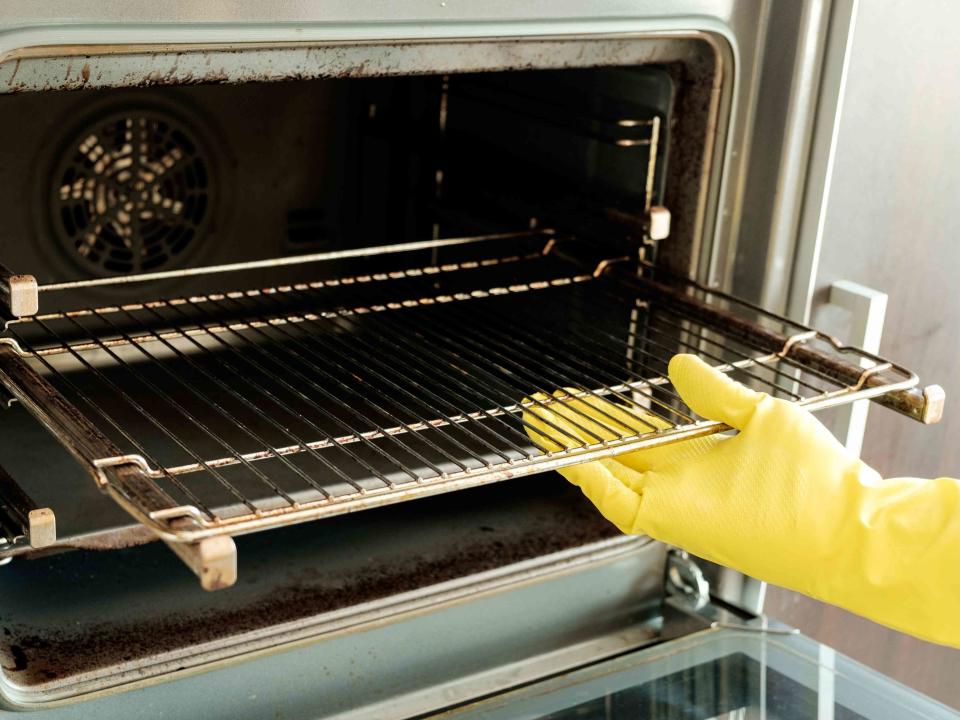Here’s Why You Shouldn’t Use Your Oven’s Self-Cleaning Function
The risks are just not worth it.

filistimlyanin/Getty Images
Pressing the self-cleaning button on your oven seems like a feature of convenience—surely it must be the easiest way to clean your oven. And if the manufacturer built it into the product, that must also mean it's safe. But turns out, it could be the cause of unwanted problems with the oven.
A common call that appliance pros answer for home repairs is for ovens that stop working after the self-cleaning feature has been used.
A self-cleaning oven is made to incinerate the sticky grease and crumbs that accumulate in the oven after use. The intense heat of the self-clean cycle turns the residue into ash. The oven has to raise the interior temperature to a scorching heat of almost 1,000 degrees Fahrenheit for three to five hours for this to happen. And that prolonged temperature can cause damage to the oven, and to you if you aren't careful.
Why Shouldn't You Use the Self-Clean Oven Function?
It Can Damage Your Oven's Parts
Running the self-cleaning function on your oven can cause damage to parts. During the self-cleaning process the oven uses temperatures hot enough to burn out wires and control buttons or warp important oven heating elements. Pieces like the locking mechanism on the door, the thermostat and control touch panel are also at risk.
It Can Cause Harmful Emissions And Smoke
The high heat of the self-clean process is meant to burn off any food particles, crumbs and spills in the oven. This means that leftover food and liquids, especially sugary substances, can lead to smoke and fumes seeping out of the oven and filling the kitchen. Dangerous carbon dioxide can also be released. The exhaust fan above the stove won't be strong enough to clear the air and these fumes are harmful to people and pets.
It Doesn't Actually Clean It Completely
The self-cleaning function actually runs the risk of making your cleaning project more difficult thanks to that high heat again. Food debris inside the oven that is not burned off may become cemented in the oven which will require additional scraping and work to remove.
It's Simply Too Hot
In order for the self-clean function to work, the internal temperature of the oven can reach a scorching 1000 degrees Fahrenheit. This can cause the exterior of the appliance to heat to a temperature that is dangerous to the touch. An oven running at an extremely high heat for several hours can also pose a fire hazard.
How to Safely Clean Your Oven
In lieu of using that self-cleaning function, we opt for a standard procedure using baking soda, vinegar, and good old-fashioned elbow grease.
A general rule for a cleaning schedule for your oven is to consider how often it is used.
If the oven is used to turn out Friday-night lasagna, casseroles or other baked goods on a regular basis, give the oven a thorough clean once every three months. An oven that gets used less frequently can go up to six months before needing an overall cleaning.
Keeping the oven clean helps prolong the life of the appliance. It is safer to cook in a clean oven as opposed to a dirty one because it isn't filled with baked-on grease and grime. As food debris builds up in an oven, it puts the appliance at a higher risk of fire and presents a potential safety hazard in the kitchen.
Read the original article on All Recipes.

